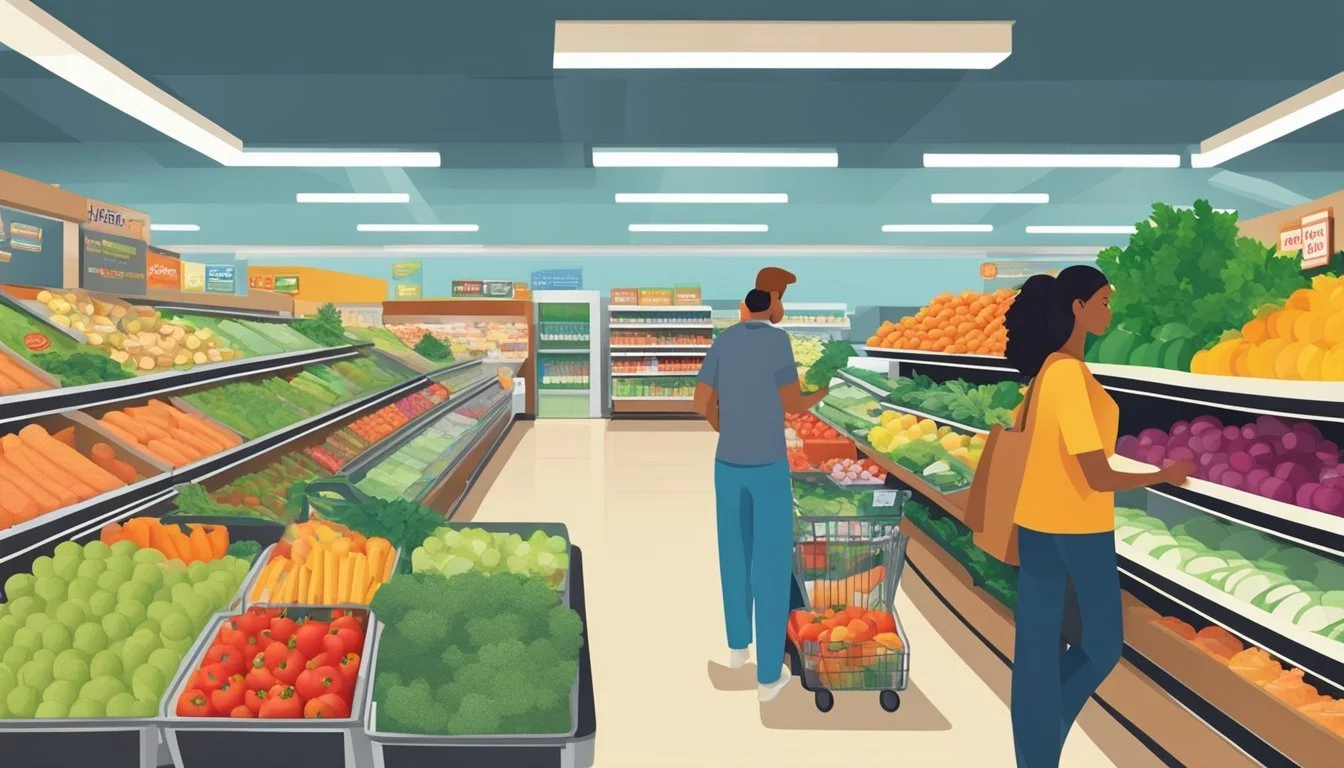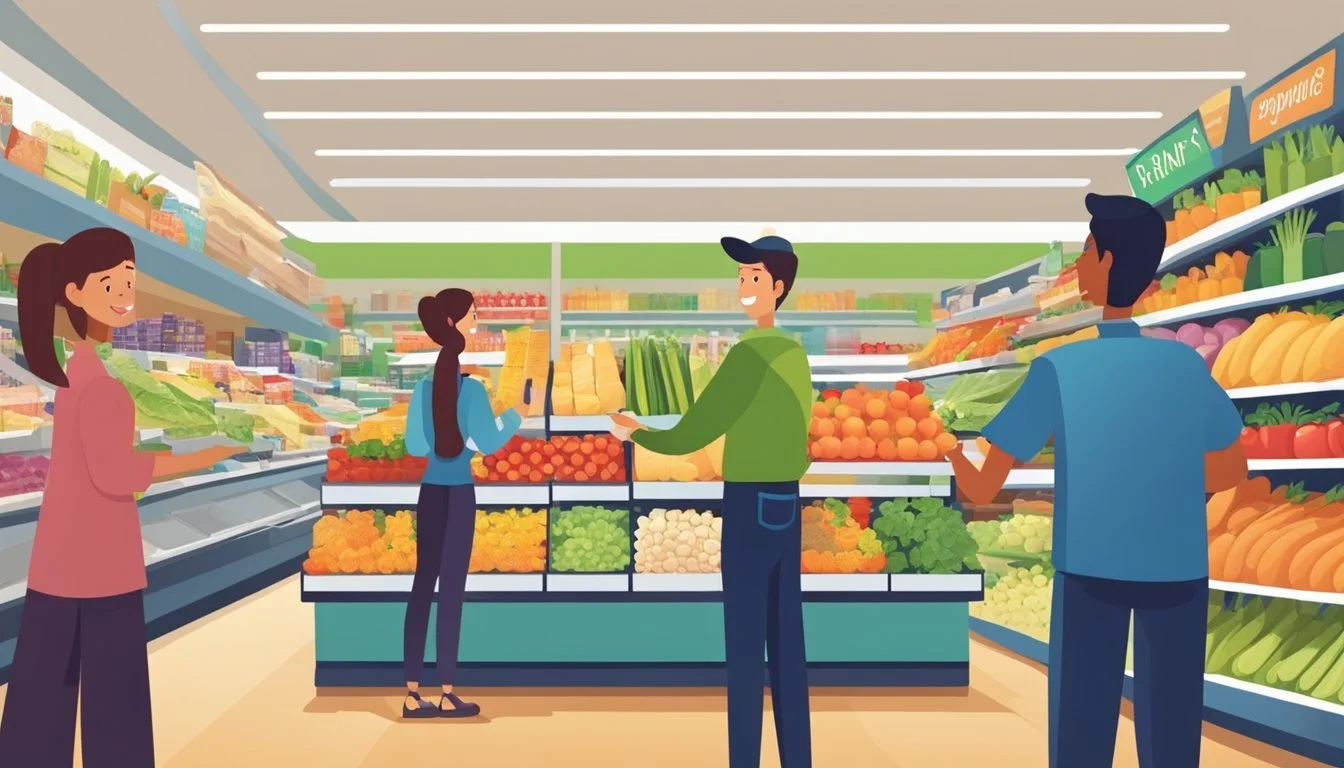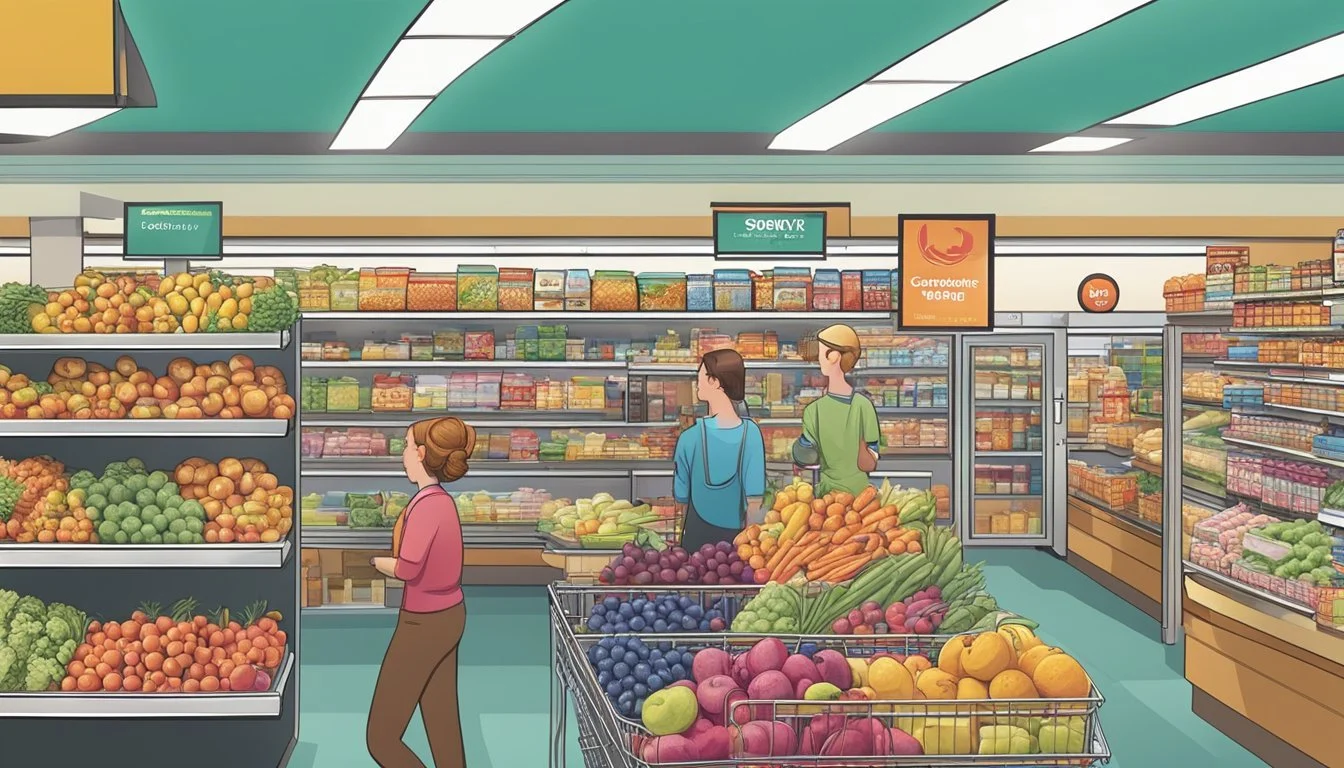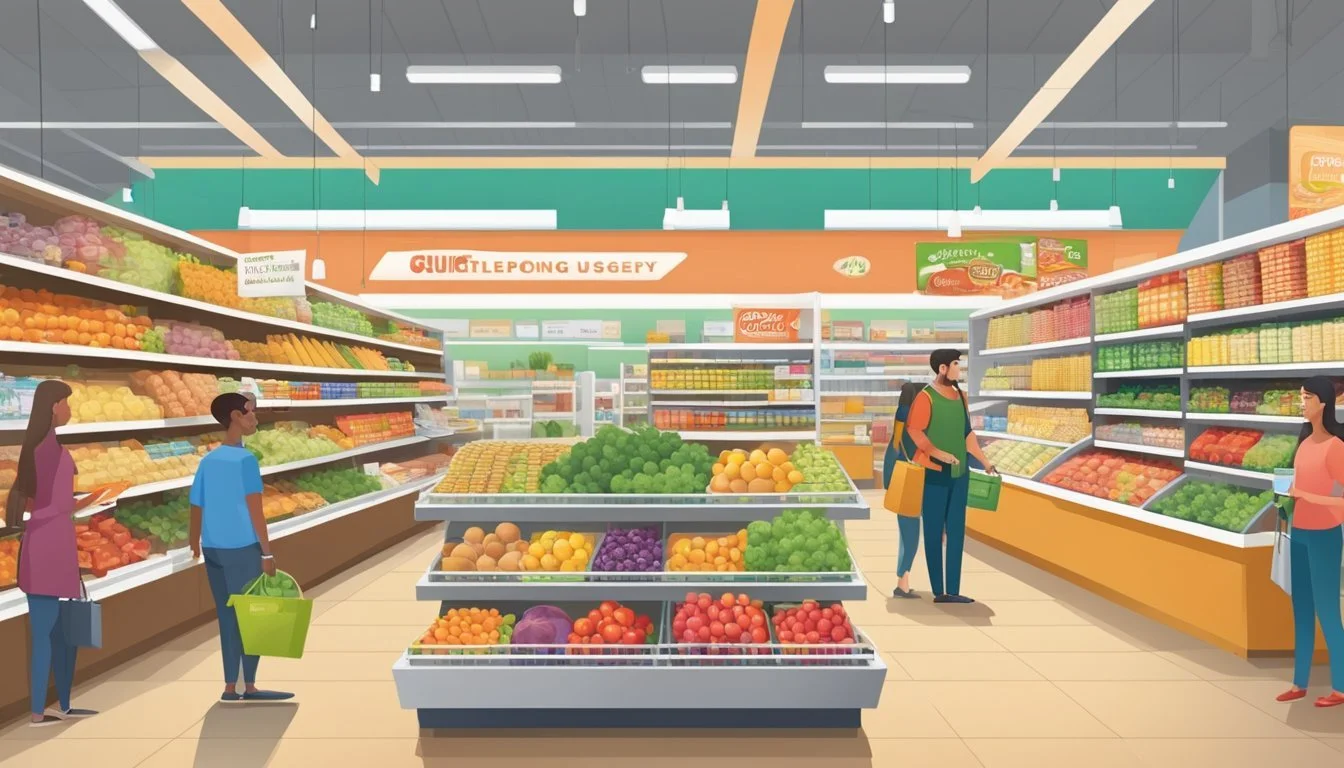Grocery Outlet vs Piggly Wiggly
A Comprehensive Comparison of Budget-Friendly Options
Grocery Outlet and Piggly Wiggly represent two distinct approaches to the grocery shopping experience. While both aim to provide quality products at affordable prices, their strategies and store atmospheres differ significantly.
Grocery Outlet offers a treasure hunt-like experience with its ever-changing inventory of discounted brand-name products, while Piggly Wiggly provides a more traditional grocery store layout with a focus on regional preferences. Grocery Outlet's business model revolves around purchasing excess inventory and discontinued items from manufacturers, allowing them to sell products at deep discounts. Piggly Wiggly, known for pioneering the self-service grocery concept, maintains a consistent selection of staple items and local favorites.
The choice between these two stores often depends on individual shopping preferences and priorities. Grocery Outlet appeals to bargain hunters who enjoy discovering unexpected deals, whereas Piggly Wiggly caters to shoppers seeking familiar products and a more predictable shopping experience. Both chains have their loyal customer bases and continue to adapt to changing consumer needs in the competitive grocery market.
History and Evolution of the Brands
Piggly Wiggly and Grocery Outlet have both left significant marks on the American grocery landscape. These two chains emerged in different eras and took distinct paths to growth and innovation.
The Legacy of Piggly Wiggly
Piggly Wiggly revolutionized grocery shopping when it opened its first store in Memphis, Tennessee in 1916. Founded by Clarence Saunders, it introduced the novel concept of self-service shopping. This innovation allowed customers to select their own goods from shelves, a stark contrast to the clerk-served model of the time.
Saunders' vision extended beyond the shopping experience. Piggly Wiggly pioneered price-marking individual items and introduced checkout stands. These changes reduced labor costs and lowered prices for consumers.
The chain's unique name and pig mascot quickly became recognizable across the Southern and Midwestern United States. Piggly Wiggly's influence spread rapidly, with hundreds of stores opening within a few years of its inception.
Grocery Outlet's Expansion
Grocery Outlet's story began in 1946, much later than Piggly Wiggly's. The company started as a military surplus outlet in San Francisco. It later shifted focus to selling discounted, overstocked groceries.
The chain's business model centered on offering brand-name products at significant discounts. This approach appealed to budget-conscious shoppers and allowed Grocery Outlet to expand steadily.
In the 1970s and 1980s, Grocery Outlet spread beyond California. The company adopted a unique operator model, where local families run individual stores. This strategy fostered community connections and supported rapid growth.
Grocery Outlet went public in 2019, marking a new chapter in its evolution. The chain continues to expand, with over 400 locations across the western United States and Pennsylvania.
Comparing Business Models
Grocery Outlet and Piggly Wiggly employ distinct business models that shape their operations, market presence, and customer experiences. These approaches impact their ability to compete in the grocery retail sector.
Franchising and Ownership
Grocery Outlet operates on an independent owner-operator model. Local entrepreneurs run individual stores, benefiting from the company's brand and purchasing power. This structure allows for community-tailored offerings and personalized customer service.
Piggly Wiggly pioneered the franchise model in grocery retail. It licenses its brand to independent store owners. This system enables Piggly Wiggly to expand with lower corporate risk while leveraging local market knowledge.
Both models foster entrepreneurship and local business ownership. They differ in corporate support levels and operational autonomy granted to store operators.
Economies of Scale and Market Presence
Grocery Outlet focuses on opportunistic buying, purchasing excess inventory and discontinued items from manufacturers. This strategy allows them to offer deep discounts to customers. Their market presence is growing, with over 400 locations primarily in the western United States.
Piggly Wiggly's franchise model has led to a more widespread but less uniform presence. It operates in 17 states, concentrated in the Southeast and Midwest. The decentralized structure can limit economies of scale in purchasing and marketing compared to more centralized chains.
Grocery Outlet's centralized buying power contrasts with Piggly Wiggly's more fragmented approach. This difference impacts pricing strategies and product consistency across locations.
Store Experience and Design
The layout, design, and overall shopping experience play crucial roles in how customers perceive and interact with grocery stores. Both Grocery Outlet and Piggly Wiggly have distinct approaches that shape their in-store environments.
Layout and Navigation
Grocery Outlet typically features a no-frills warehouse-style layout. Aisles are wide and open, with products often displayed in their original shipping boxes. This design allows for easy restocking and a sense of value shopping. The store's layout changes frequently due to rotating inventory, which can make navigation challenging for some shoppers.
Piggly Wiggly, on the other hand, maintains a more traditional grocery store layout. Aisles are clearly labeled and organized by product categories. The familiar arrangement helps customers easily find what they need. Produce sections are often placed near the entrance, creating a fresh and inviting atmosphere.
Checkout Experience
Grocery Outlet emphasizes efficiency in its checkout process. The stores usually have multiple lanes open to handle customer traffic. Self-checkout options are limited, as the company focuses on personal interaction and service at the register.
Piggly Wiggly offers a mix of traditional cashier lanes and self-checkout kiosks in many locations. This variety caters to different customer preferences. The chain has been working to implement more modern point-of-sale systems to speed up transactions and reduce wait times.
Both stores strive to maintain short checkout lines, but experiences can vary based on location and time of day. Grocery Outlet's changing inventory may occasionally lead to price checks, while Piggly Wiggly's consistent stock typically results in smoother transactions.
Product Selection and Availability
Grocery Outlet and Piggly Wiggly offer distinct product selections that cater to different shopper preferences. Their offerings vary in terms of fresh produce, store brands, and organic options.
Comparing Fresh Produce Selection
Grocery Outlet provides a changing array of fresh fruits and vegetables, often featuring unique or seasonal items at discounted prices. Their produce selection can be inconsistent due to their opportunistic buying model.
Piggly Wiggly, on the other hand, maintains a more stable produce section. They focus on staple fruits and vegetables commonly used in Southern cuisine. The chain prioritizes locally sourced produce when possible, supporting regional farmers.
Both stores offer competitive prices on produce, but Grocery Outlet may have more frequent deals on specialty items.
Availability of Store Brands and Organic Options
Grocery Outlet carries a mix of name-brand products and their own private label items. Their organic selection is growing, with an emphasis on packaged goods and frozen foods. The store's inventory changes frequently, which can lead to exciting finds but may frustrate shoppers looking for consistent availability.
Piggly Wiggly offers its own line of store brand products across various categories. These items provide budget-friendly alternatives to national brands. The chain has been expanding its organic offerings, though the selection may be more limited compared to larger supermarket chains.
Both stores aim to provide value through their store brands, but Grocery Outlet's ever-changing inventory means shoppers may need to be more flexible in their choices.
Pricing Strategies and Affordability
Grocery Outlet and Piggly Wiggly employ distinct pricing approaches to attract budget-conscious shoppers. Both chains aim to offer competitive prices, but their strategies differ in execution and customer engagement.
Everyday Pricing Compared to Sales and Discounts
Grocery Outlet focuses on consistently low prices through its unique sourcing model. The chain buys excess inventory and closeout items from manufacturers, passing savings directly to customers. This results in everyday low prices on many products, often 40-70% below conventional retail.
Piggly Wiggly, in contrast, uses a mix of regular pricing and frequent sales. The store offers weekly specials and promotional deals to draw customers. These sales can provide significant savings on select items, but regular prices may be higher than Grocery Outlet's everyday low prices.
Both stores stock a mix of national brands and private label products. Grocery Outlet's inventory changes frequently due to its sourcing model, while Piggly Wiggly maintains a more consistent selection.
Loyalty Programs and Digital Coupons
Piggly Wiggly operates a loyalty program called "Pig Points." Customers earn points on purchases, which can be redeemed for discounts on future shopping trips. The program also provides access to digital coupons and exclusive member-only deals.
Grocery Outlet does not offer a traditional loyalty program. Instead, the chain focuses on its "WOW" deals - deeply discounted items that change regularly. These deals are available to all shoppers without requiring membership.
Digital coupons are more prevalent at Piggly Wiggly, where customers can load offers to their loyalty card through the store's app or website. Grocery Outlet relies less on coupons, emphasizing its everyday low pricing model.
Both stores aim to provide value, but through different methods. Piggly Wiggly rewards repeat customers and offers targeted savings, while Grocery Outlet appeals to bargain hunters with its ever-changing inventory of discounted products.
Location and Convenience
Grocery Outlet and Piggly Wiggly have distinct regional presences and offer different levels of accessibility to shoppers. Their store locations and layouts impact shopping convenience and time savings for customers.
Regional Presence and Accessibility
Grocery Outlet operates primarily on the West Coast, with stores in California, Oregon, Washington, Idaho, Nevada, and Pennsylvania. They have been expanding to other regions in recent years.
Piggly Wiggly, in contrast, has a strong presence in the South and Midwest. The chain is particularly prominent in Alabama and other southeastern states. This regional focus allows Piggly Wiggly to cater to local tastes and preferences.
Accessibility varies between the two chains. Grocery Outlet tends to locate in urban and suburban areas, often in strip malls or standalone buildings. Piggly Wiggly stores are frequently found in smaller towns and rural communities.
Shopping Convenience and Time Savings
Grocery Outlet stores are typically smaller than traditional supermarkets, ranging from 10,000 to 20,000 square feet. This compact size can make shopping quicker and more efficient for customers.
Piggly Wiggly stores vary in size but often feature a familiar layout that longtime shoppers appreciate. Many locations offer services like in-store butchers and delis, which can save time for customers seeking fresh-cut meats or prepared foods.
Both chains prioritize easy-to-navigate store layouts. Grocery Outlet's smaller footprint means less walking for shoppers. Piggly Wiggly's self-service model, pioneered in 1916, continues to emphasize customer convenience and time savings.
Customer Service and Satisfaction
Customer service and shopper satisfaction play crucial roles in the grocery shopping experience. Both Grocery Outlet and Piggly Wiggly strive to meet customer needs, but their approaches differ.
Shopper Support and Services
Grocery Outlet offers a no-frills shopping experience with limited services. They focus on providing low prices rather than extensive customer support. Cashiers are often the main point of contact for shoppers.
Piggly Wiggly, as a more traditional grocery chain, typically provides a wider range of services. These may include:
Dedicated customer service desks
Assistance with bagging groceries
Carryout service for elderly or disabled customers
In-store butchers and deli counters
Many Piggly Wiggly stores also offer online ordering and curbside pickup options, enhancing convenience for shoppers.
Customer Feedback and Satisfaction Levels
Customer satisfaction varies between the two stores. Grocery Outlet shoppers often praise the store's low prices and unique product selection. They appreciate the "treasure hunt" aspect of finding unexpected deals.
Piggly Wiggly garners loyalty from its customers, particularly in smaller communities. Shoppers value the personalized service and community-oriented atmosphere. Consumer surveys indicate that Piggly Wiggly customers are generally satisfied with their shopping experience.
Both stores have areas for improvement. Grocery Outlet sometimes faces criticism for inconsistent product availability. Piggly Wiggly may struggle to compete on price with larger chains, which can impact customer satisfaction.
Comparative Analysis of Value
Grocery Outlet and Piggly Wiggly offer distinct value propositions for budget-conscious shoppers. Both chains aim to provide affordable options, but their approaches differ in terms of product selection and pricing strategies.
Quality of Goods Versus Price Point
Grocery Outlet specializes in offering brand-name products at discounted prices. They achieve this through opportunistic buying and selling overstock or closeout items. This model allows customers to purchase high-quality goods at lower prices than traditional supermarkets.
Piggly Wiggly, on the other hand, focuses on a mix of national brands and private-label products. Their pricing is generally competitive, with regular promotions and deals to attract cost-conscious shoppers.
Price Comparison:
Grocery Outlet: Often 40-70% off retail prices
Piggly Wiggly: Competitive pricing with frequent sales
Quality can vary at Grocery Outlet due to its ever-changing inventory. Piggly Wiggly maintains more consistent quality across its product range.
Overall Value for the Consumer
Grocery Outlet offers significant savings on brand-name items, making it ideal for shoppers who prioritize deals on specific products. The trade-off is a less predictable shopping experience, as inventory fluctuates.
Piggly Wiggly provides a more traditional grocery shopping experience with reliable product availability. Their value comes from:
Consistent pricing
Loyalty programs
Weekly specials
Budget-conscious consumers may find better deals at Grocery Outlet, especially on non-perishables. Piggly Wiggly offers better value for those seeking a one-stop shop with a full range of grocery items.
Both stores cater to value-seeking customers, but Grocery Outlet excels in deep discounts while Piggly Wiggly provides a more comprehensive shopping experience.
Technological Integration and Shopping Experience
Grocery stores have embraced various technologies to enhance customer convenience and streamline operations. Self-service innovations and digital platforms have transformed how shoppers interact with stores and complete purchases.
Self-Service and Checkout Technologies
Piggly Wiggly pioneered self-service grocery shopping in 1916, revolutionizing the industry. Customers could browse and select items themselves rather than relying on clerks. This model became the standard for modern supermarkets.
Today, both Grocery Outlet and Piggly Wiggly offer self-checkout options in many locations. These systems allow shoppers to scan and pay for items independently, reducing wait times.
Grocery Outlet has implemented more advanced technologies in some stores, including mobile scan-and-go apps. These allow customers to scan products with their smartphones as they shop.
Online Shopping and Digital Services
Grocery Outlet has invested heavily in e-commerce capabilities. Many locations offer online ordering with curbside pickup or home delivery options. Their mobile app provides digital coupons and personalized deals.
Piggly Wiggly's online presence varies by franchise owner. Some locations have partnered with third-party services for grocery delivery. Others maintain basic websites with weekly ads and store information.
Digital loyalty programs are more prevalent at Grocery Outlet. Customers can earn rewards and access exclusive discounts through their online accounts or mobile app.
Both chains continue to evolve their digital strategies to meet changing consumer preferences for convenience and contactless shopping experiences.
The Future of Grocery Shopping
Grocery shopping is evolving rapidly, driven by technological advancements and changing consumer preferences. Both established chains and newer entrants are adapting to meet these shifts.
Innovation and Adaptation in Retail
Amazon Go stores exemplify cutting-edge grocery technology. Customers swipe their app upon entry, allowing seamless checkout without cashiers. This model may influence future supermarket designs.
Self-service, pioneered by Piggly Wiggly in 1916, continues to evolve. Today, it extends to self-checkout kiosks and scan-as-you-shop systems in many chains.
Online ordering and curbside pickup have become standard offerings. Grocery chains are investing in robust e-commerce platforms and efficient fulfillment processes.
Artificial intelligence is optimizing inventory management and personalizing shopping experiences. Some stores use AI to predict stock needs and customize promotions for individual shoppers.
Predictions for Grocery Outlet and Piggly Wiggly
Grocery Outlet may expand its discount model to include more tech-driven solutions. The chain could implement mobile apps for deal alerts and loyalty programs to attract budget-conscious, tech-savvy consumers.
Piggly Wiggly, with its history of innovation, might focus on blending traditional service with modern conveniences. This could involve introducing smart shopping carts or enhancing its digital presence while maintaining its community-oriented approach.
Both chains are likely to invest in sustainable practices. This may include reducing plastic packaging, sourcing more local products, and implementing energy-efficient store designs to appeal to environmentally conscious shoppers.









